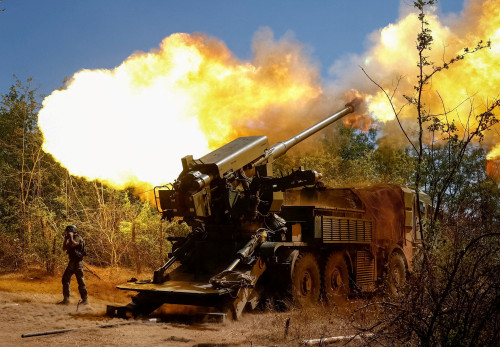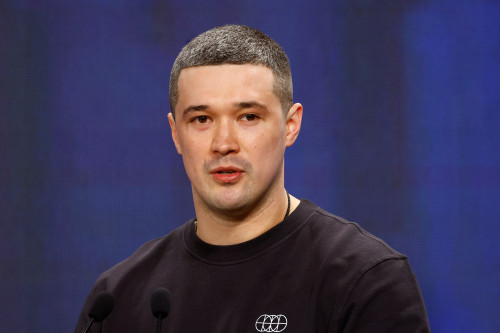By Max Hunder
KYIV (Reuters) -Ukraine is looking at how to share battlefield data with allies, the country’s deputy prime minister said, calling the vast trove of stored information one of Kyiv’s “cards” to strengthen its position as it negotiates support from friendly countries.
“The data we have is priceless for any country,” Mykhailo Fedorov, who heads Ukraine’s digitalisation ministry, told Reuters in an interview, adding that Ukraine is currently “very careful” about sharing it.
Vast datasets are crucial for training artificial intelligence (AI) models to recognise patterns and make predictions.
That need is particularly pressing in the burgeoning global defence sector. While datasets for most civilian activities can be found commercially, the 21st century’s biggest war between advanced armies has given Ukraine a set of combat data with no parallel, which could help Kyiv prove its value as an ally to Washington.
Since Russia launched its 2022 invasion, Ukraine has collected reams of meticulously logged battlefield statistics. And with the war increasingly fought by drones, it now has millions of hours of combat footage filmed from the air.
“I think this is one of the ‘cards’, as our colleagues and partners say, to build win-win relations,” Fedorov said, an apparent nod to U.S. President Donald Trump, who told Ukraine’s President Volodymyr Zelenskiy in a disastrous Oval Office meeting in February that “you don’t have the cards”.
“The demand for the data is incredibly high, but at the moment we are forming policy how to organise this process correctly,” Fedorov said.
Ukraine has also sought to position itself as a testing ground for international defence companies, inviting them to try out new weapons in Ukraine. Fedorov said that nearly 1,000 applications had been received so far, and 50 different products were “coming to Ukraine”.
Ukraine now uses AI to help pilot drones, including several of its systems used for long-range attacks deep inside Russia, Fedorov said. Computers can scan detailed aerial and satellite reconnaissance imagery for targets which would take a human “dozens of hours” to find, he said.
Fedorov said work was ongoing on systems which would make drones fully autonomous, which would allow them to fly without a pilot and work in swarms.
AI TECHNOLOGY
He added that Ukraine was using AI technology from U.S. data analysis firm Palantir for a wide variety of purposes, such as analysing Russian strikes on Ukraine for patterns or tracking Moscow’s disinformation campaigns. Palantir was founded by U.S. billionaire Peter Thiel, a figure influential among members of the Trump administration.
Not all Ukraine’s uses of Palantir are military: the minister said it also helped to decide where to build bomb-proof underground schools, or which territories to prioritise in demining efforts.
These days, between 80% and 90% of Russian targets struck on the battlefield are now destroyed with drones, Fedorov said.
That is an increase from 2024, when nearly 70% of troops and 75% of vehicles hit by Ukraine were struck with drones.
Fedorov, who is seen as an ally of President Volodymyr Zelenskiy, has at the age of 34 already served for five years as the minister in charge of Ukraine’s digitalisation effort, which has led him to be heavily involved in Ukraine’s search for innovative defence technologies to beat back its richer and better armed foe.
As part of this, his ministry has been operating a video game-style points system for confirmed kills or the destruction of Russian vehicles and equipment.
Those points can then be exchanged for drones, electronic signal jammers and other weapon systems on a sleek, Amazon-style marketplace, while units are ranked on monthly leaderboards.
Fedorov said that since the system was introduced a year ago, about 500,000 drones had been handed out to units in exchange for points.
“This stimulates units to kill more, to share data on the basis of which decisions are later made about what is effective and what is not.”
Ukrainian troops now regularly speak of a ‘kill zone’ on both sides of the front, where moving around in the open is rendered almost impossible by the constant threat of drones.
Fedorov estimated that this zone now stretched about 10-15 km from the front line, and that it could reach as far as 20 km in the next year.
Fedorov said that operating in such an environment was “hellish work”.
As a result, he said Ukraine is now using several thousand unmanned ground vehicles (UGVs) on the battlefield to bring in ammunition and supplies to soldiers holding the frontline in dugouts.
(Reporting by Max HunderEditing by Peter Graff)


